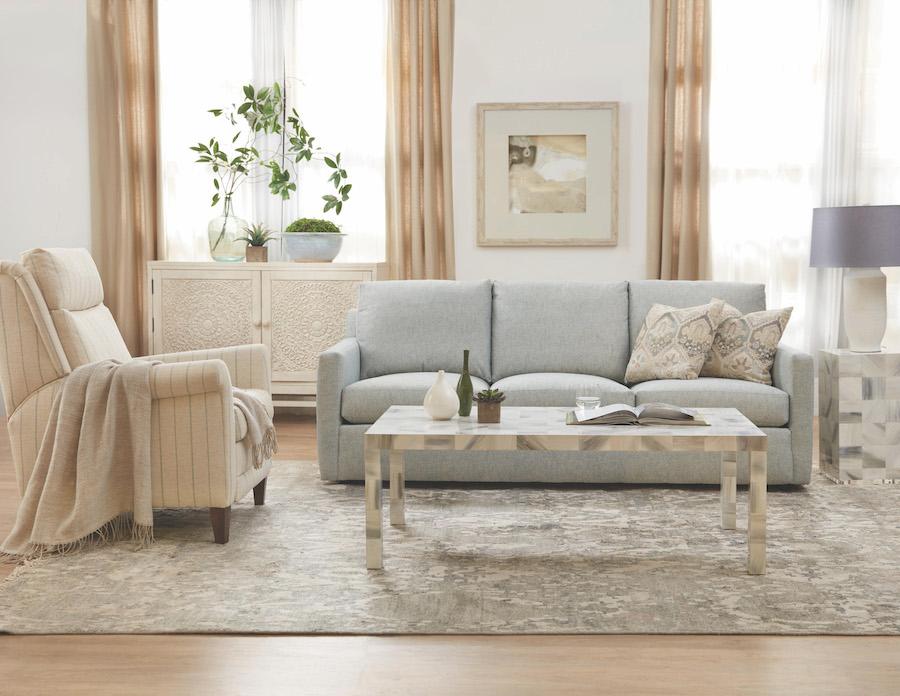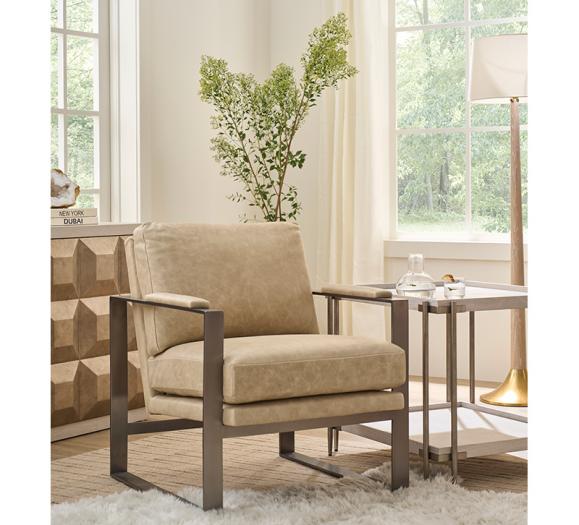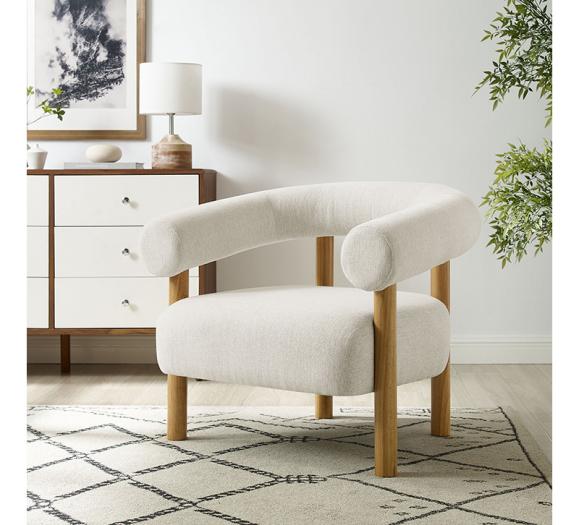Once found primarily in high-traffic commercial and hospitality settings, performance textiles are increasingly making their way into people’s homes. As performance fabric technology evolves, manufacturers are able to produce pieces that are not only stain- and light-resistant, but also stylish and comfortable.
“Furniture can be costly and the most visible, used component is the upholstery; therefore it has to be something that can last and not easily stained,” says Christy Almond, Vice President of Marketing and Product Development for Valdese Weavers. “Innovations in performance fabrics have made it possible to have beautiful, soft, and colorful textiles that you would never know were durable and cleanable too! This really was a game changer in the selection process.”
Norwalk Furniture has been offering performance fabrics since 2014 and has only seen the demand increase since then, according to Chief Creative Officer Dixon Bartlett. Bartlett says customers are becoming more trusting of the technology and are willing to take more risks.
“If you look at the top 25 of our best-selling fabrics, almost half of them are now performance,” he says. “One of the things that we’ve noted from a style standpoint is they’ve gotten lighter. People are more and more confident using ivory and cream and even white-white, whereas before those fabrics were very lightly used.”
Bartlett says stain-resistance is the main reason Norwalk customers choose performance fabrics. Whether the culprits are kids or pets, consumers are looking for upholstery that can stand up against their lifestyles.
“Our core belief is that beautiful fabrics can feel great and also perform against every element that makes a house a home – whether that’s family meals or messy pets,” says Steve Pawl, Chief Marketing Officer for Sunbrella. “People who invest in performance fabrics are seeking peace of mind that their sofa or throw pillow will last season after season and that they’ll continue to be comfortable. Additionally, performance fabric is so much more than function, and there are endless options that allow for any and all personal expressions.”
Reduce, Reuse, Recycle
According to research from the Sustainable Furnishings Council, 76 percent of shoppers are willing to spend more on furnishings that fit their style and are certified to be environmentally safe. As sustainability becomes more important to home furnishings consumers, performance textile manufacturers are ramping up their environmentally conscious initiatives.
“We believe customers are becoming increasingly more knowledgeable about what they buy and from whom they buy. When it comes to sustainability, more consumers are seeking products and brands that will help them be environmentally friendly,” Pawl says. “This certainly applies to performance fabrics and the furniture used in everyday life.”
Sunbrella has clearly defined sustainability goals outlined on their website. Initiatives include wastewater reduction at manufacturing facilities using a solution dyeing process, the use of solar power to reduce energy consumption, and zero waste to landfill at every manufacturing facility.
To further minimize waste, Sunbrella offers its Renaissance program in which fabric scraps, fiber and yarn are used to create new yarns. Recycled fibers are sorted into color groups before entering into the manufacturing process. The resulting yarns are made of 93 percent post-industrial recycled fiber with virgin Sunbrella fiber, with the same performance characteristics as the company’s traditional performance textiles.
“Renaissance was primarily driven by our internal values and the belief that we could push ourselves to find new ways to reuse material and make something beautiful that our customers would love,” Pawl says. “That’s held true, and consumer behavior certainly validated our thinking.”
Promoting Wellness
Because a number of chemicals are used in performance fabric production, from dyes to stain guards, many manufacturers are doing their part to protect not only customers, but also their own employees. Valdese Weavers is one such example. In addition to using recycled materials, the company’s InsideOut performance fabrics are free of perfluorinated compounds, and the dyeing and finishing process is carefully controlled.
“Being ISO 9001 certified, we are very conscious about the way we protect our employee owners and be a responsible community citizen,” Almond says. “Having our own dyeing and finishing facilities helps us ensure our textiles are made of responsible materials. This is not often the case when products are sourced overseas using harmful dyes and chemicals banned in the US or where employees are not treated fairly.”
Crypton also recently announced a reduction to less than 0.1 percent total fluorine in its fabric. This production change was implemented with lessons learned from the brand’s C-Zero line of performance fabric, which is completely free of all fluorines.
Commercial performance textile manufacturer Designtex aims for transparency in production and materials, allowing customers to make better-informed purchasing decisions.
“Designtex’s ethos is to bring art, science, technology and community together to push the boundaries of how materials can add value to people and their environments,” says Sara Baldari, Principal Designer at Designtex.
The company recently launched Celliant, a line of performance upholstery made of a blend of thermo-reactive materials that capture and convert body heat into infrared energy. Touting the technology as “charging stations for people,” the company says this helps increase circulation, improve cellular oxygenation, and regulate body temperature.
“[Celliant] is a revolutionary material that harnesses and recycles a person’s energy, providing a boost and improving wellbeing,” says Baldari. “The coolest thing about Celliant is that all you need to do is sit to reap the benefits.”
While sustainability features offer added value to this already-advantageous textile option, Bartlett says performance is the deciding factor for whether Norwalk will carry a particular fabric.
“If it doesn’t perform, it’s in as fast as it’s out,” he says. While the company does offer some fabrics made from recycled materials, Bartlett says consumer demand is not high enough for them to carry a fabric for the sake of sustainability. He says consumers are ultimately more concerned about whether their furniture can stand up to their lifestyle.
The simple act of opting for performance fabrics is an environmentally conscious choice by the consumer whether they realize it or not, however. Durable upholstery that is designed to weather stains and sunlight means furniture that will last longer. Long-lasting furniture that needs to be replaced less often means less furniture that ends up in landfills. Investing in quality furniture and upholstery is an ultimate win for both the consumer and the environment.







